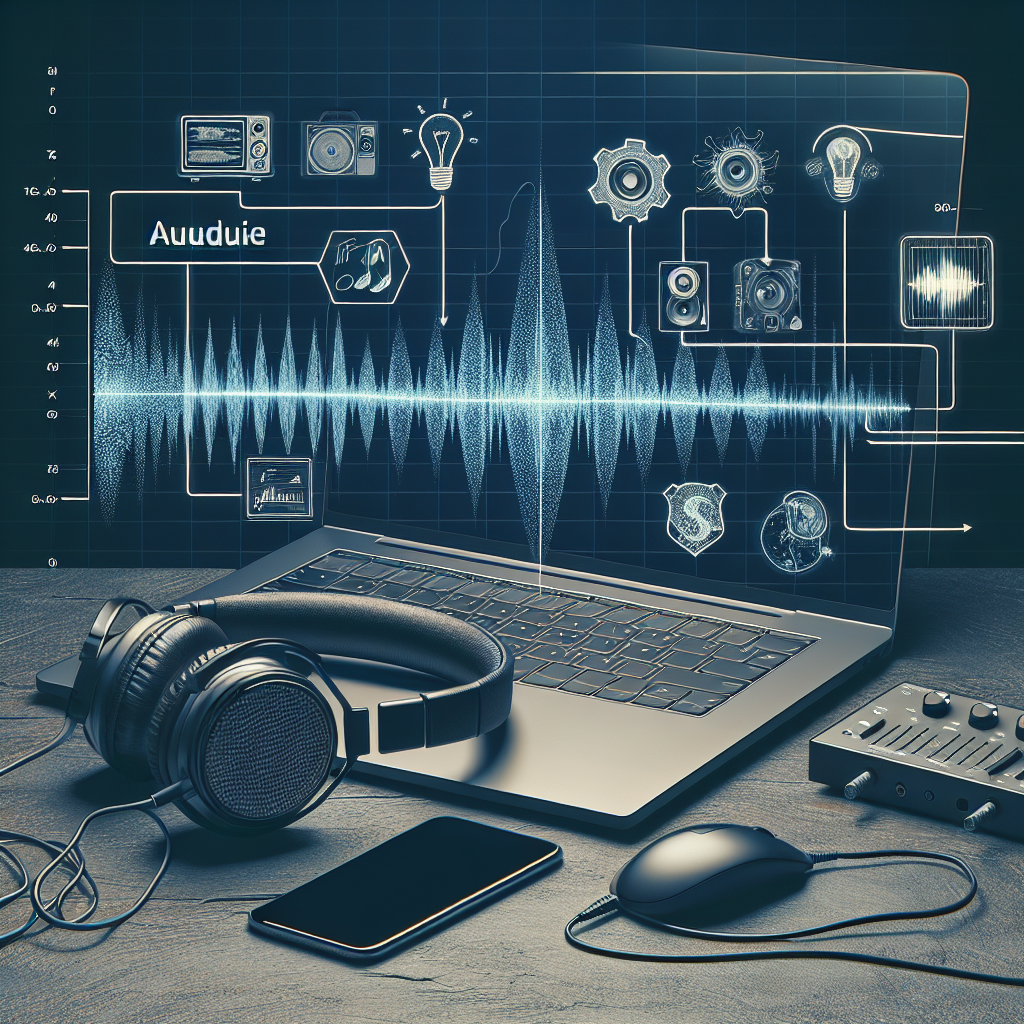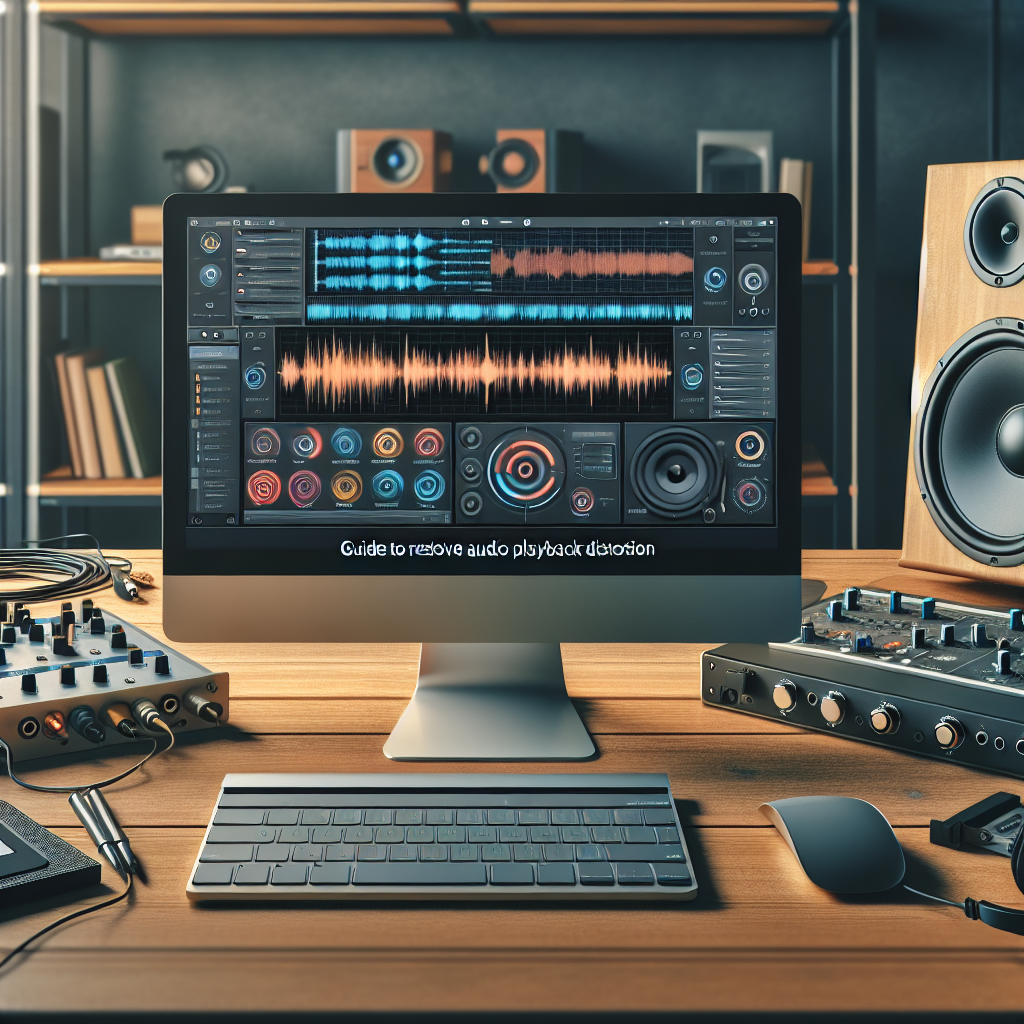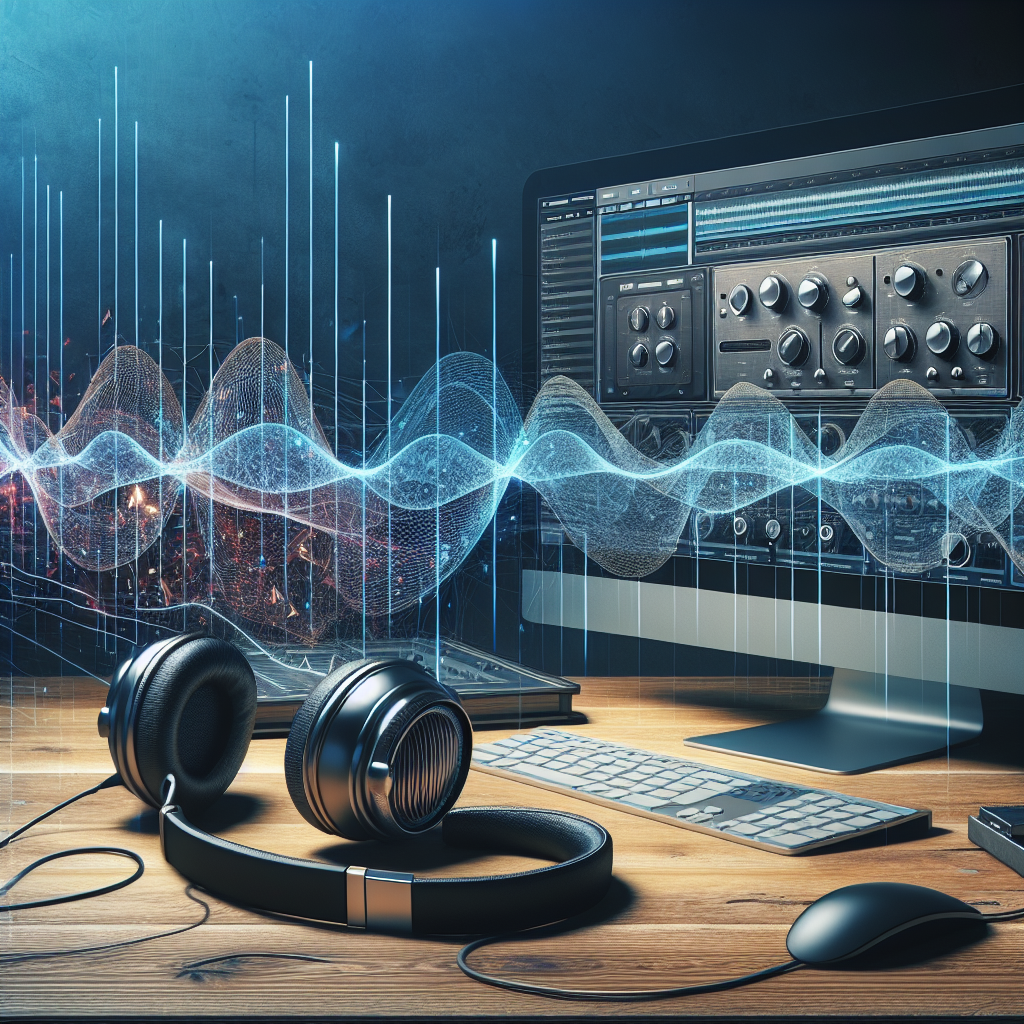Are you tired of hearing crackling, popping, or distorted audio when trying to enjoy your favorite music or movies? Look no further! Our guide to resolving audio playback distortion is here to help you finally achieve crystal-clear sound quality. Whether you are a music enthusiast, a movie buff, or just someone who appreciates high-quality audio, this comprehensive guide will provide you with step-by-step solutions to tackle any audio playback issues you may be facing. Say goodbye to frustrating audio distortion and hello to an immersive listening experience like never before!
Understanding Audio Playback Distortion

– Definition of Audio Playback Distortion
– Audio playback distortion refers to any alteration or degradation in the quality of sound during the process of playing back audio recordings. This distortion can manifest in various forms, such as crackling, clipping, buzzing, or static noise, disrupting the clarity and fidelity of the audio output.
- Common Causes of Audio Distortion
-
Overloading of audio equipment, such as amplifiers or speakers, can lead to audio distortion. When the volume levels exceed the capacity of the equipment, it can introduce unwanted distortions into the sound signal. Electrical interference from nearby electronic devices or poor quality cables can also contribute to audio playback distortion. Additionally, software issues, such as outdated drivers or incompatible audio settings, may cause distortion during playback.
-
Impact of Audio Distortion on Sound Quality
- Audio distortion significantly impairs the listening experience by altering the original sound characteristics intended by the audio source. It can introduce harshness, muddiness, or unwanted artifacts into the audio, diminishing the overall quality and fidelity of the sound reproduction. Distortion can mask subtle details in the audio signal, reduce dynamic range, and create listener fatigue over prolonged periods of distorted playback.
Identifying Audio Playback Distortion
When it comes to identifying audio playback distortion, there are several key aspects to consider in order to pinpoint and resolve the issue effectively. Here are some details regarding the various elements of identifying audio playback distortion:
- Signs of Audio Distortion
- Distorted sound quality, characterized by crackling, popping, or buzzing noises.
- Inconsistent volume levels or sudden changes in audio clarity.
- Audio clipping, where certain parts of the sound are cut off or distorted.
-
Muffled or fuzzy audio output that lacks clarity and definition.
-
Tools for Detecting Audio Distortion
- Audio waveform analysis software to visualize and analyze the audio signal for any irregularities.
- Spectrum analyzers to identify frequency-specific distortion or noise in the audio playback.
- Audio interface with monitoring capabilities to listen to the audio output in real-time and detect any distortions.
-
High-quality headphones or speakers to accurately hear and identify any subtle audio distortions.
-
Importance of Identifying the Source of Distortion
- Pinpointing the source of audio distortion is crucial for effectively resolving the issue and restoring optimal sound quality.
- Identifying the specific cause of distortion helps in implementing targeted solutions, whether it involves adjusting settings, replacing faulty hardware components, or optimizing audio playback configurations.
- Understanding the root cause of audio distortion prevents further damage to audio equipment and ensures a seamless listening experience without disruptions.

Troubleshooting Audio Playback Distortion
Basic Troubleshooting Steps
-
Check Volume Levels: Ensure that the volume on your audio playback device and speakers is not set too high, causing distortion.
-
Restart Devices: Sometimes a simple restart of your computer or audio device can resolve audio playback distortion issues.
-
Use Different Audio Files: Test different audio files to determine if the distortion is specific to certain files or a general problem.
-
Update Audio Player: Make sure your audio player software is up to date, as outdated software can sometimes cause playback issues.
Advanced Troubleshooting Techniques
-
Software Updates and Driver Checks: Check for any available updates for your operating system, audio drivers, and playback software. Outdated software or drivers can lead to audio distortion.
-
Adjusting Audio Settings: Experiment with adjusting the equalizer settings on your audio player or device to see if tweaking the bass, treble, or other settings can help reduce distortion.
-
Check Audio Output Device: Ensure that the correct audio output device is selected in your system settings. Sometimes, distortion can occur if the wrong device is chosen.
-
Inspect Audio Cables and Connections: Check all audio cables and connections for any signs of damage or loose connections. A faulty cable or connection can lead to audio playback distortion.
-
Test on Different Devices: If possible, test the audio playback on a different device to determine if the distortion is specific to one device or across multiple devices.
-
Consider Hardware Issues: If the distortion persists after trying software fixes, there may be an underlying hardware issue with your audio device or speakers that requires professional inspection.
Resolving Hardware-Related Distortion
When encountering audio playback distortion, a crucial step is to assess and address any potential hardware-related issues. This section delves into the specifics of resolving distortion stemming from hardware components.
-
Checking and Upgrading Hardware Components
Audio playback distortion can often be attributed to outdated or malfunctioning hardware components. It is imperative to scrutinize the following elements:
-
Sound Card and Audio Interface: The sound card or audio interface plays a pivotal role in delivering clear and crisp audio output. If distortion is prevalent, consider upgrading to a higher-quality sound card or interface to mitigate the issue.
-
Speakers and Headphones: Distorted audio playback can also be a result of faulty speakers or headphones. Inspect these peripherals for any damage or irregularities, and opt for replacements if necessary to restore audio fidelity.
-
Calibrating Audio Equipment for Optimal Performance
In addition to ensuring the functionality of hardware components, calibrating audio equipment is paramount for achieving optimal performance and minimizing distortion. Calibration involves fine-tuning various settings to enhance the audio output quality:
-
Equalization (EQ) Settings: Adjusting the EQ settings on your sound card, audio interface, or media player can help rectify distortion issues caused by imbalanced frequencies. Experiment with different EQ presets or manually tweak the settings to achieve a more balanced audio output.
-
Volume Levels: Excessively high volume levels can lead to audio distortion. Keep the volume at an appropriate level to prevent clipping and distortion, thereby preserving the integrity of the audio signal.
-
Placement of Speakers: Proper placement of speakers or headphones can significantly impact audio clarity. Ensure that speakers are positioned correctly and that there are no obstructions hindering sound propagation, as this can alleviate distortion issues caused by poor acoustics.
By meticulously examining and upgrading hardware components, as well as calibrating audio equipment for optimal performance, individuals can effectively address and resolve audio playback distortion, thereby enhancing their overall listening experience.
Addressing Software-Related Distortion
When encountering audio playback distortion, it’s crucial to first explore potential software-related issues that might be causing the problem. Here are some steps to address software-related distortion:
-
Updating Audio Drivers and Software: Outdated audio drivers can often lead to playback distortion. To resolve this, check for updates for your audio drivers and software. Visit the manufacturer’s website or use device manager to ensure you have the latest versions installed. Updating these components can often significantly improve audio playback quality and reduce distortion issues.
-
Configuring Playback Settings: Sometimes, distortion may arise due to incorrect playback settings on your device. Ensure that the audio settings are configured properly for the type of media you are playing. Check the volume levels, equalizer settings, and any effects that may be enabled. Adjusting these settings appropriately can help minimize distortion and improve the overall audio quality.

– Utilizing Audio Enhancement Tools: There are various audio enhancement tools available that can help optimize audio playback and reduce distortion. Consider using tools like equalizers, sound enhancers, or noise reduction software to enhance the audio output. Experiment with different settings to find the optimal configuration that minimizes distortion and delivers clear, high-quality sound output.
Preventing Future Audio Distortion Issues
Audio distortion can be a frustrating issue that disrupts your listening experience. By taking proactive steps to prevent future audio distortion problems, you can ensure a smoother playback experience and prolong the lifespan of your audio equipment.
- Regular Maintenance and Cleaning
Proper maintenance and cleaning of your audio equipment are essential to prevent audio distortion. Dust and debris can accumulate on speakers, connectors, and other components, leading to poor sound quality. Regularly dusting and cleaning your equipment with a soft, dry cloth can help prevent buildup and maintain optimal audio performance.
- Proper Handling and Storage of Audio Equipment
Improper handling and storage of audio equipment can also contribute to audio distortion issues. Avoid dropping or mishandling your equipment, as physical damage can impact sound quality. Additionally, store your audio devices in a cool, dry place away from direct sunlight and moisture to prevent damage and ensure consistent performance.
- Implementing Best Practices for Audio Playback
When playing audio, be mindful of the volume levels to prevent distortion. High volumes can overload speakers and cause sound distortion. It’s important to find a balance between enjoying your audio at a comfortable volume level and avoiding distortion. Additionally, using high-quality audio files and ensuring proper connectivity between devices can help maintain clear, distortion-free sound during playback.
FAQs – Guide to Resolve Audio Playback Distortion
What causes audio playback distortion?
Audio playback distortion can be caused by a variety of factors, such as a poor connection between your audio source and speakers, outdated or faulty audio drivers, low-quality audio files, or issues with your hardware or software components.
How can I troubleshoot audio playback distortion?
To troubleshoot audio playback distortion, start by checking all physical connections between your audio source and speakers to ensure they are secure and free of any damage. Next, update your audio drivers to the latest version and test playback with different audio files to determine if the issue is related to file quality. If the problem persists, consider testing your speakers on another device to see if the distortion is happening across multiple devices.
What can I do if the audio distortion persists?
If audio distortion continues to be an issue, consider adjusting the settings on your audio playback device to see if there are any specific configurations that could be causing the distortion. Additionally, try resetting your audio settings to their default state and running a diagnostic tool to scan for any underlying hardware or software issues that may be contributing to the problem. If necessary, consult with a professional technician for further assistance.